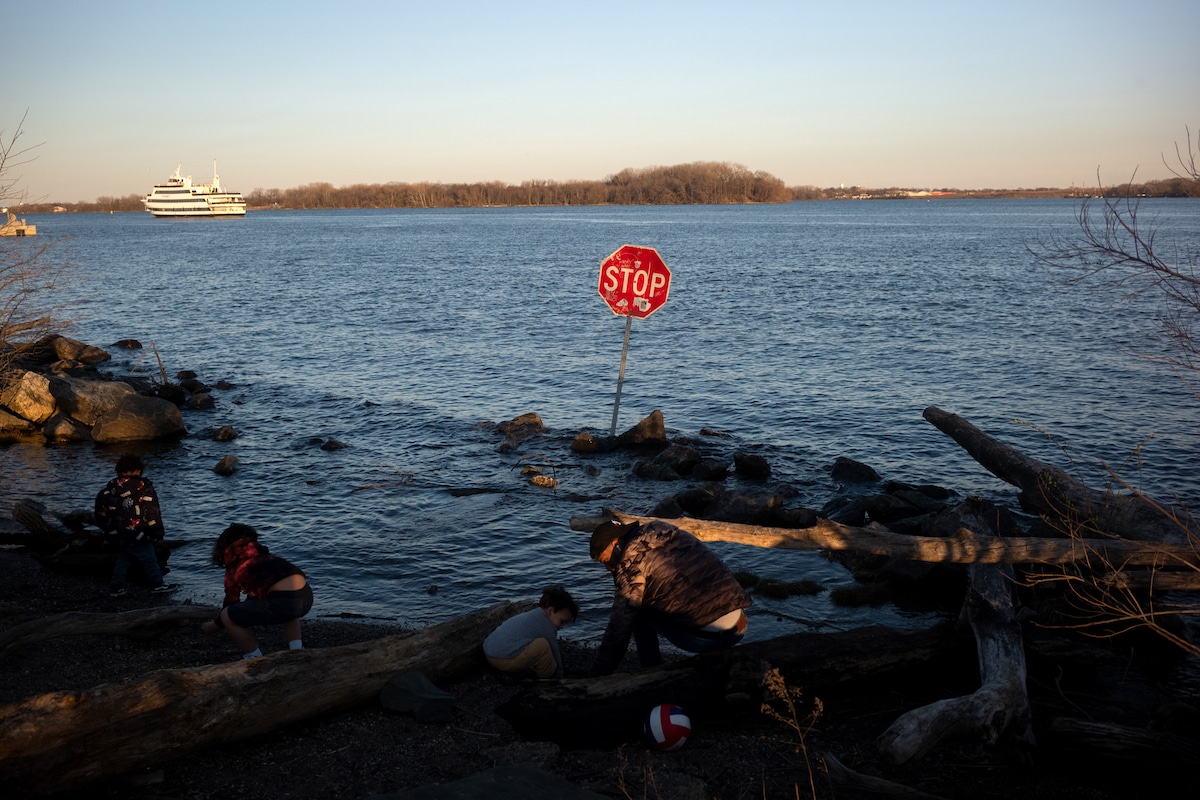Latex Chemical Spill Contaminates Delaware River, Supplier of More Than Half of Philadelphia’s Water

 Why you can trust us
Why you can trust us
Founded in 2005 as an Ohio-based environmental newspaper, EcoWatch is a digital platform dedicated to publishing quality, science-based content on environmental issues, causes, and solutions.
On Friday, thousands of gallons of a water-soluble acrylic latex polymer solution were released into a tributary of the Delaware River, which supplies more than half of Philadelphia’s drinking water. The release of the chemicals into Otter Creek began late Friday night from the Trinseo Altuglas plant in Bristol, PA, according to a statement from the Delaware Riverkeeper Network.
While it was estimated that 8,100 gallons of the chemical were released, the discharge could have been up to 12,000 gallons, reported U.S. Coast Guard News.
“The release of material has been stopped and our efforts are now focused on testing the local waterways,” said Trinseo CEO Frank Bozich, according to U.S. Coast Guard News. “We are conducting a thorough assessment of all of our systems and processes to identify and address potential vulnerabilities and will take the steps necessary to close any gaps.”
The Trinseo website said Altugas was working with government agencies to clean up the discharge, which appeared to be due to an equipment failure. It said the material had overflowed into a storm drain and into Otter Creek and the Delaware River.
The Philadelphia Water Department released a statement saying that tap water from the Baxter Drinking Water Treatment Plant would be safe to drink and use for cooking, washing and bathing at least through 11:59 p.m. tonight. This was based on sampling, other data and hydraulic modeling.
“This updated time is based on the time it will take river water that entered the Baxter intakes early Sunday morning to move through treatment and water mains before reaching customers,” the statement said.
New water that came into the Baxter Water Treatment plant overnight will need to be tested for safety, The Philadelphia Inquirer reported.
As of Sunday evening, the Philadelphia Water Department was encouraging residents to store tap water rather than buying bottled water.
“We advise people that they can drink their tap water. There’s no need to buy water,” said Mike Carroll, deputy managing director for the city’s Office of Transportation, Infrastructure and Sustainability, as WHYY-FM reported. “If they want to store water, they should store water from their tap in a bottle or pitcher and they can stick it in their fridge or refrigerator and it will be fine for them to drink.”
The spill is a reminder of the dangers toxic chemicals pose to drinking water and the environment.
“Friday night’s spill of latex chemicals upstream of the intake that supplies drinking water for hundreds of thousands of Philadelphians reminds us that we cannot take safe drinking water for granted. We’re calling for an investigation into the cause of the spill and measures to prevent such pollution in the future,” PennEnvironment’s Clean Water Advocate Stephanie Wein in a statement. “The chemical release included butyl acrylate, one of the chemicals spilled during the recent East Palestine train derailment and a common ingredient used in plastic and resin manufacturing. This incident upstream of Philadelphia’s major drinking water intake is the latest reminder of why we must reduce the use of toxic substances and shift to safer alternatives wherever possible.”
Though it did not appear that the drinking water supplies from the Delaware River were contaminated, Delaware Riverkeeper Maya van Rossum said it was important for the public to remain watchful.
“It is always a concern when there is a spill of chemicals or hazardous materials to our River system… It is important that people remain vigilant and if they see, smell, or witness concerning impacts to the River, fish, or wildlife that they immediately report it,” said Van Rossum in the statement from the Delaware Riverkeeper Network. “The public is worried and has a right and need to know what is going on when there is a hazardous release. Stagnant press reports that state there have been no reports of impacts to fish or wildlife without giving out the number to which eyewitness reports can be made is not enough; people need to be informed.”
So far, 60,000 gallons of contaminated water had been collected through clean-up efforts.
“While there have not been reports of impacts to fish, aquatic life or wildlife, when a spill of this nature happens it is always important for people to remain vigilant should they see anything of concern, and to report it immediately to the National Response Center’s Emergency Report Line 1-800-424-8802,” Van Rossum said.
The potential impact zone of the spill can be seen here in a map released by the Philadelphia Water Department.
Subscribe to get exclusive updates in our daily newsletter!
By signing up, you agree to the Terms of Use and Privacy Policy & to receive electronic communications from EcoWatch Media Group, which may include marketing promotions, advertisements and sponsored content.

 233k
233k  41k
41k  Subscribe
Subscribe 




